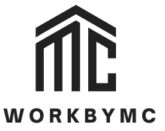Light sensitivity, also known as photophobia, is one of the most common and frustrating symptoms experienced during concussion recovery. Even normal levels of light can cause discomfort, headaches, or fatigue, making it challenging to complete daily tasks. Learning to manage light sensitivity effectively is key to ensuring a smoother recovery process. Concussion physiotherapy in Edmonton emphasizes holistic approaches to concussion management, including strategies to address light sensitivity.
Why Does Light Sensitivity Occur After a Concussion?
Light sensitivity typically arises after a concussion due to the brain’s heightened sensitivity to external stimuli during the healing process. The eyes and brain are closely connected, so any disruption in brain function can affect how light is processed. Common symptoms of light sensitivity include:
- Headaches: Bright or artificial lights can trigger or worsen headaches.
- Eye Strain: Difficulty focusing or a burning sensation in the eyes.
- Fatigue: Increased exposure to light can leave you feeling mentally and physically drained.
- Dizziness or Nausea: Prolonged exposure to bright environments may worsen other post-concussion symptoms.
Essential Tips for Managing Light Sensitivity After a Concussion
Concussion management in Edmonton offers guided approaches to handle light sensitivity effectively, enhancing the path to recovery.
1. Create a Low-Light Environment
Reducing light exposure is one of the simplest ways to manage light sensitivity during concussion recovery.
- Dim the Lights: Use soft, warm lighting instead of bright, fluorescent bulbs.
- Close Curtains or Blinds: Keep direct sunlight out of your space to create a more comfortable environment.
- Use Blue Light Filters: Screens emit blue light, which can aggravate light sensitivity. Apply screen filters or adjust device settings to reduce blue light exposure.
A low-light environment allows the brain to rest and minimizes additional strain on the eyes, which is an important aspect of concussion management.
2. Wear Tinted Glasses
Specialized glasses can significantly reduce discomfort caused by light sensitivity. These glasses are designed to filter out certain wavelengths of light, making them ideal for both indoor and outdoor use.
- FL-41 Tinted Glasses: This specific tint is commonly recommended for managing photophobia.
- Sunglasses for Outdoor Use: When outside, opt for polarized sunglasses to minimize glare and brightness.
- Avoid Overuse: Relying on tinted glasses too much can sometimes delay full adaptation to light, so use them as needed rather than continuously.
Wearing the right glasses can reduce headaches and eye strain, making it easier to navigate light-sensitive environments.
3. Take Frequent Breaks from Screens
In today’s digital age, avoiding screens entirely during recovery can feel impossible. However, prolonged screen time often worsens light sensitivity, so it’s important to take regular breaks.
- Adjust Screen Brightness: Lower the brightness on your phone, computer, or TV to a comfortable level.
- Enable Dark Mode: Many apps and devices offer dark mode, which reduces overall light exposure from screens.
Limiting screen time and incorporating breaks into your routine are essential steps in managing light sensitivity and promoting concussion recovery.
4. Gradually Reintroduce Light Exposure
While reducing light exposure is helpful initially, it’s important to gradually reintroduce light over time. This process helps the brain and eyes adapt and build tolerance to normal lighting conditions.
- Start with Dim Lighting: Begin in low-light environments and slowly increase brightness as tolerated.
- Expose Yourself to Natural Light: Spend short periods outside in shaded areas to ease back into daylight.
- Avoid Overstimulation: Limit time in overly bright or flickering environments, such as shopping malls or offices with fluorescent lighting.
Gradual exposure helps restore normal light tolerance without overwhelming the brain, which is a common strategy used in concussion physiotherapy.
5. Practice Relaxation Techniques
Light sensitivity is often exacerbated by stress and tension. Incorporating relaxation methods into your daily schedule can help reduce overall discomfort.
- Deep Breathing Exercises: Slow, deep breaths can calm the nervous system and reduce light-triggered headaches.
- Progressive Muscle Relaxation: This involves tensing and releasing different muscle groups to ease physical tension.
- Mindfulness or Meditation: Quieting the mind can help alleviate mental fatigue associated with light sensitivity.
Relaxation techniques not only ease light sensitivity but also support broader aspects of concussion recovery.
6. Consult a Physiotherapist
If light sensitivity persists or significantly impacts daily life, seeking professional guidance is essential. Physiotherapy can provide targeted exercises and strategies to address lingering symptoms.
- Vestibular Rehabilitation: Helps reduce dizziness and eye strain caused by light sensitivity.
- Visual Therapy: Focused on improving eye coordination and reducing discomfort during visual tasks.
- Individualized Concussion Management Plans: A physiotherapist can tailor treatments to address specific symptoms and challenges.
Concussion physiotherapy in Edmonton offers a comprehensive approach to managing light sensitivity and other concussion symptoms, ensuring a smoother and more seamless recovery process.
Manage Light Sensitivity with Effective Strategies
Light sensitivity after a concussion can be challenging, but with the right strategies, it’s possible to reduce discomfort and support your recovery. Concussion physiotherapy in Edmonton provides tailored care for managing light sensitivity and other post-concussion symptoms. Whether you’re looking to reduce eye strain or improve tolerance to light, physiotherapy offers practical solutions to support your recovery.
Our Family Physiotherapy in Edmonton offers tailored concussion management and helps you regain comfort and functionality. Implementing these strategies into your routine allows you to take meaningful steps toward recovery and regain control over your daily life.
